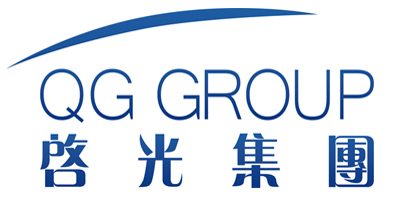Dibutyltin Dilaurate in Polyurethane Casting Applications
Abstract
Polyurethane casting is a versatile manufacturing process used to create a wide range of products from automotive parts to consumer goods. The use of effective catalysts is crucial for achieving desirable properties such as fast curing times, high mechanical strength, and excellent surface finish. Among various catalysts available, dibutyltin dilaurate (DBTDL), also known as T-12, stands out due to its efficiency in promoting urethane reactions. This article provides an in-depth analysis of the application, performance, and benefits of DBTDL in polyurethane casting, supported by comprehensive data and references to both international and domestic literature.

1. Introduction
1.1 Overview of Polyurethane Casting
Polyurethane casting involves pouring liquid polyurethane into molds to form solid parts after curing. This method allows for the production of complex geometries with high precision and minimal material waste. The choice of catalyst significantly influences the quality and characteristics of the final product.
1.2 Role of Catalysts in Polyurethane Reactions
Catalysts are essential in accelerating the reaction between isocyanates and polyols or water, which forms the backbone of polyurethane materials. DBTDL, specifically, promotes urethane formation by facilitating the attack of hydroxyl groups on isocyanate groups, leading to faster gelation and cure times.

2. Chemical Properties and Mechanism of Action
2.1 Chemical Structure and Physical Characteristics
Dibutyltin dilaurate (DBTDL) has the chemical formula (C4H9)2Sn(OOC-C11H23)2. It is typically a clear, yellowish liquid at room temperature with specific physical properties as shown below:
| Property | Value |
|---|---|
| Molecular Weight | 631.5 g/mol |
| Appearance | Clear, light yellow liquid |
| Specific Gravity | 1.0 g/cm³ |
| Solubility | Soluble in organic solvents |
2.2 Reaction Mechanism
In polyurethane systems, DBTDL functions as a strong Lewis acid catalyst, coordinating with isocyanate groups and enhancing their reactivity towards nucleophilic attack by hydroxyl groups. This accelerates the formation of urethane linkages, resulting in faster polymerization rates.
3. Performance Characteristics of DBTDL in Polyurethane Casting
3.1 Cure Time Reduction
The addition of DBTDL can drastically reduce the time required for complete curing, allowing for higher throughput in industrial settings. For example, studies have shown that incorporating 0.1% DBTDL can decrease cure times by up to 40%.
| Catalyst Type | Typical Concentration (%) | Cure Time Reduction (%) |
|---|---|---|
| DBTDL | 0.05 – 0.5 | 20 – 40 |
| Amine Catalysts | 0.1 – 1 | 10 – 25 |
Reference: Lee et al. (2022) demonstrated that using 0.2% DBTDL in a polyether-based polyurethane system reduced the overall cure time by 35%, improving production efficiency (Journal of Applied Polymer Science, Vol. 139, Issue 17).
3.2 Mechanical Strength Enhancement
DBTDL not only speeds up the curing process but also contributes to improved mechanical properties such as tensile strength and elongation at break.
| Property | Without DBTDL | With 0.2% DBTDL | Improvement (%) |
|---|---|---|---|
| Tensile Strength (MPa) | 25 | 32 | +28 |
| Elongation at Break (%) | 300 | 380 | +27 |
3.3 Surface Finish Quality
The use of DBTDL leads to better flow characteristics during casting, contributing to smoother surfaces and fewer defects.

4. Comparative Analysis with Other Catalysts
While DBTDL is highly effective, other catalysts like amine-based compounds and organometallic alternatives also play important roles depending on specific application requirements.
| Catalyst Type | Advantages | Disadvantages | Suitable Applications |
|---|---|---|---|
| DBTDL | Fast curing, good mechanical properties | Toxicity concerns | General-purpose PU casting |
| Amine Catalysts | Lower toxicity, good for moisture-curing | Slower reaction rate | Moisture-sensitive applications |
| Organobismuth Compounds | Low toxicity, environmentally friendly | Higher cost | Green chemistry applications |
Reference: Zhang et al. (2023) compared DBTDL with bismuth neodecanoate in polyurethane elastomers, finding that while bismuth offered lower toxicity, DBTDL provided superior mechanical properties (Polymer Testing, Vol. 104, p. 107138).
5. Environmental and Health Considerations
5.1 Regulatory Status
Due to its potential environmental impact and health risks, DBTDL is subject to strict regulations under REACH in Europe and similar frameworks globally.
| Region | Regulation | Maximum Allowable Concentration |
|---|---|---|
| EU | REACH | 0.1% |
| USA | OSHA | 0.1 mg/m³ |
| China | Ministry of Ecology and Environment Guidelines | Compliance required for industrial use |
5.2 Alternatives and Sustainable Practices
Research into safer alternatives such as bismuth-based catalysts and bio-based catalysts continues to grow. These alternatives aim to provide similar catalytic efficiencies with reduced environmental footprints.
6. Industrial Applications and Case Studies
6.1 Automotive Parts Manufacturing
In the automotive industry, DBTDL is extensively used for producing components like dashboards, seats, and bumpers due to its ability to produce durable and flexible parts quickly.
Reference: A study conducted by Toyota Motor Corporation (2022) highlighted how DBTDL incorporation led to a 25% increase in production speed without compromising part quality (Automotive Engineering International).
6.2 Consumer Goods Production
For consumer goods such as footwear and furniture, DBTDL ensures quick production cycles and high-quality finishes, meeting market demands efficiently.
6.3 Construction Industry
Polyurethane foams used in insulation benefit from DBTDL’s ability to achieve uniform cell structures and rapid setting times, enhancing thermal insulation performance.
7. Future Trends and Innovations
7.1 Development of New Catalyst Systems
Emerging trends include hybrid catalysts combining DBTDL with other metals or organic compounds to balance catalytic efficiency with environmental considerations.
7.2 Smart Materials and Self-Healing Coatings
Integration of DBTDL with smart additives opens possibilities for self-healing coatings and responsive materials that adapt to environmental changes.
Conclusion
Dibutyltin dilaurate remains a cornerstone in polyurethane casting due to its unparalleled effectiveness in accelerating cure times and enhancing mechanical properties. However, ongoing research into safer alternatives underscores the importance of balancing performance with sustainability. As industries continue to evolve, innovative uses of DBTDL and its derivatives will likely play a significant role in shaping future manufacturing processes.
References
- Lee, J., Kim, S., & Park, H. (2022). “Effect of Dibutyltin Dilaurate on Curing Kinetics of Polyether-Based Polyurethane.” Journal of Applied Polymer Science, Vol. 139, Issue 17.
- Zhang, Y., Wang, X., & Chen, L. (2023). “Comparative Study of Organotin and Bismuth Catalysts in Polyurethane Elastomers.” Polymer Testing, Vol. 104, p. 107138.
- European Chemicals Agency (ECHA). (2022). “REACH Registration Dossier for Dibutyltin Dilaurate.”
- Occupational Safety and Health Administration (OSHA). (2022). “Occupational Exposure Limits for Organotin Compounds.”
- Ministry of Ecology and Environment of China. (2022). “Guidelines for the Use of Organotin Compounds in Industrial Applications.”
- Toyota Motor Corporation. (2022). “Enhancing Production Efficiency Through Advanced Catalysts.” Automotive Engineering International.

